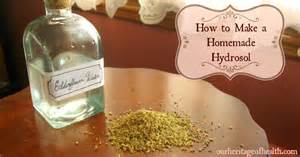One Single, Botanically Specific Plant



One Single, Botanically Specific Plant
Plant-based products for therapeutic applications must be derived from one single, botanical specific source. If we look at peppermint, we see that it is just one of many mints, including spearmint, corn mint, pennyroyal, orange, mint, apple mint. and so on. Botanically specific peppermint oil or hydrosol must come from a distillation of Mentha piperita alone.
Weeds are contaminants, as are other kinds of mints, since they contain chemicals and aromatic compounds that affect both the smell and the properties of the final product.
Theren are also many varieties of peppermint, and each has a different chemical structures. The country of origin, rainfall, temperature, altitude, insect and pest interaction, method of agriculture, and use of chemicals are factors that further the influence these differences.Distillers of plants destined for use in therapeutic applications must be able to ensure not only that it is just peppermint that they harvest but that it is the desired variety. Most aromatherapists prefer Mentha piperita var. Mitcham for therapeutic use. Its fragrance is soft and sweet, and chemically it is low in the keytone menthone and the oxide menthofurane but high in the desirable alcohol menthol. Once available only from Europe, this type of mint is now produced in the United States.
Reference: Hydrosols: suzanne Catty
Articles - Most Read
- Home
- What are Hydrosols
- What are Hydrosols-2
- The Monographs
- How to Make a Hydrosol
- Distilled or Extracted Specifically For Therapeutic Use - 3
- Table of Common Latin Names and pH Values - F - O
- Kurt Schnaubelt
- What isn't a Hydrosol?
- Table of Common Latin Names and pH Values - P - S
- Wholly Water!
- Blue Babies
- Supply and Demands
- Mature Skin
- Recipes Alpha F
- Hydrosols In The Marketplace
- Chemicals: Friends or Foes?
- Hemorrhoids
- Nelly GrosJean
- Water as Medicine
- The Educated Consumer
- Influences
- Genitically Modified Plants
- Water Quality
Articles-latest
- Daucus carota/Wild Carrot Seed - pH 3.8-4.0
- Cupressus sempervirens/ Cypress-pH3.5-3.7
- Coriandrum sativum/Coriander Herb-and-Seed
- Comptonia peregrinal/Sweet Fern- pH 3.8
- Citrus clementine (fe) Clementine Petitgrain- pH 4.3-4.4
- Citrus aurantium var. amara (flos) /Neroli Orange Blossom-pH3.8-4.5
- Cistus ladaniferus/Rock Rose-pH 2.9-3.1
- Cinnamomum zeylanicum (ec) Cinnamon Bark-pH3.3
- Chamaemelum nobile/Roman Chamomile - pH 3.0-3,3
- Centaurea cyanus/Cornflower/Bachelor's Button-pH 4.7-5.0
- Cedrus atlantical/Cedarwood/Atlas Cedar-pH 4.1- 4.2
- Hydrosols -The PH - Anomalies
- Hydrosols- Establishing Shelf Life and Stability
- Boswellia carterii/FRANKINCENSE
- Asarum canadense/ Wild Ginger/Canadian Ginger
- Artemesia vulgaris / Artemesia
- ARTEMESIA DRACUNCULUS - TARRAGON
- Angelica archangelica / Angelica Root - Hydrosols
- The Key, or More Correctly, the pH - 2 - Hydrosols
- The Key, or More Correctly, the pH-Hydrosols
- The Hard pHacts - Hydrosols
- Calamus Root/Sweet Flag - ACORUS CALAMUS
- Yarrow - Achillea millefolium - Hydrosols
- Balsam Fir - Abies balsamea - Hydrosols


